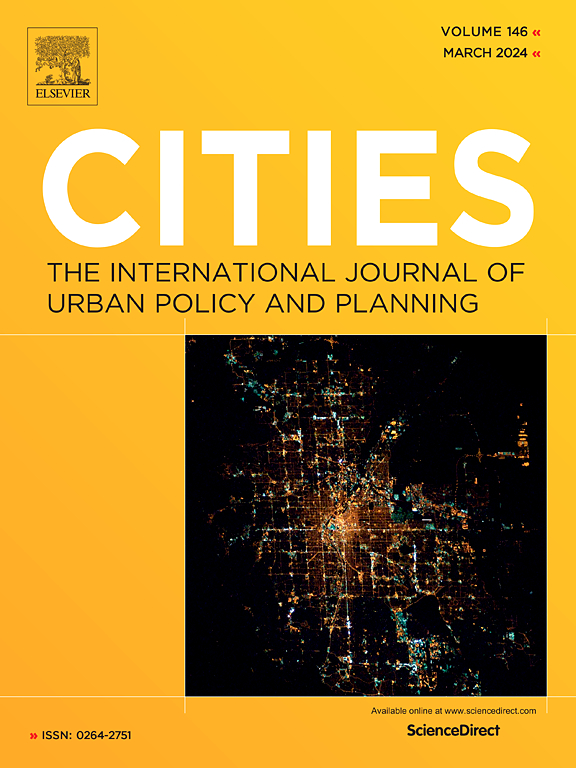城市化与植被覆盖之间是否存在冲突或协调关系?对俄罗斯74个联邦科目的调查
IF 6.6
1区 经济学
Q1 URBAN STUDIES
引用次数: 0
摘要
研究城市化与植被的关系对城市可持续发展和城市生态环境研究具有重要意义。俄罗斯的城市化进程是独特的,城市扩张与植被覆盖之间的演变关系在很大程度上仍未被探索。将10年城市物理边界数据与30 m分辨率植被指数相结合,引入城市化-植被关系指数(UVRI)。该指数评估了1990年至2020年俄罗斯74个联邦主体的城市化与植被覆盖之间的冲突或协调。结果表明:(1)近30年来,俄罗斯74个联邦主体城市扩张迅速、广泛但不均衡,城市面积增加38,526.71 km2;(2)总体上,各联邦区城市植被覆盖度增加,城市植被绿化趋势明显。然而,不同城市在不同发展阶段的植被覆盖度变化是不同的。(3) uvri在俄罗斯74个联邦科目中的62个进行协调。这表明俄罗斯大多数城市的城市化与植被覆盖之间的关系是协调的。然而,东部和西部城市表现出明显的空间异质性。本文章由计算机程序翻译,如有差异,请以英文原文为准。
Is there a relationship between urbanization and vegetation cover conflict or coordination? A survey of 74 federal subjects in Russia
Investigating the connection between urbanization and vegetation is crucial for sustainable urban development and the study of urban ecological environments. The urbanization process in Russia is distinctive, and the evolving relationship between urban expansion and vegetation cover remains largely unexplored. We integrated 10-year urban physical boundary data with a 30-m resolution vegetation index to introduce the urbanization–vegetation relationship index (UVRI). This index assesses the conflict or coordination between urbanization and vegetation cover across 74 federal subjects in Russia from 1990 to 2020. The results show that (1) over the past three decades, Russia's 74 federal subjects have undergone swift and extensive yet uneven urban expansion, with urban areas increasing by 38,526.71 km2. (2) In general, the vegetation coverage of cities in various federal areas has increased, and urban vegetation has shown an apparent greening trend. However, the changes in vegetation cover vary across cities at different stages of development. (3) UVRIs are coordinated in 62 of Russia's 74 federal subjects. This indicates that the relationship between urbanization and vegetation cover in most Russian cities is coordinated. However, cities in the east and west display evident spatial heterogeneity.
求助全文
通过发布文献求助,成功后即可免费获取论文全文。
去求助
来源期刊

Cities
URBAN STUDIES-
CiteScore
11.20
自引率
9.00%
发文量
517
期刊介绍:
Cities offers a comprehensive range of articles on all aspects of urban policy. It provides an international and interdisciplinary platform for the exchange of ideas and information between urban planners and policy makers from national and local government, non-government organizations, academia and consultancy. The primary aims of the journal are to analyse and assess past and present urban development and management as a reflection of effective, ineffective and non-existent planning policies; and the promotion of the implementation of appropriate urban policies in both the developed and the developing world.
 求助内容:
求助内容: 应助结果提醒方式:
应助结果提醒方式:


